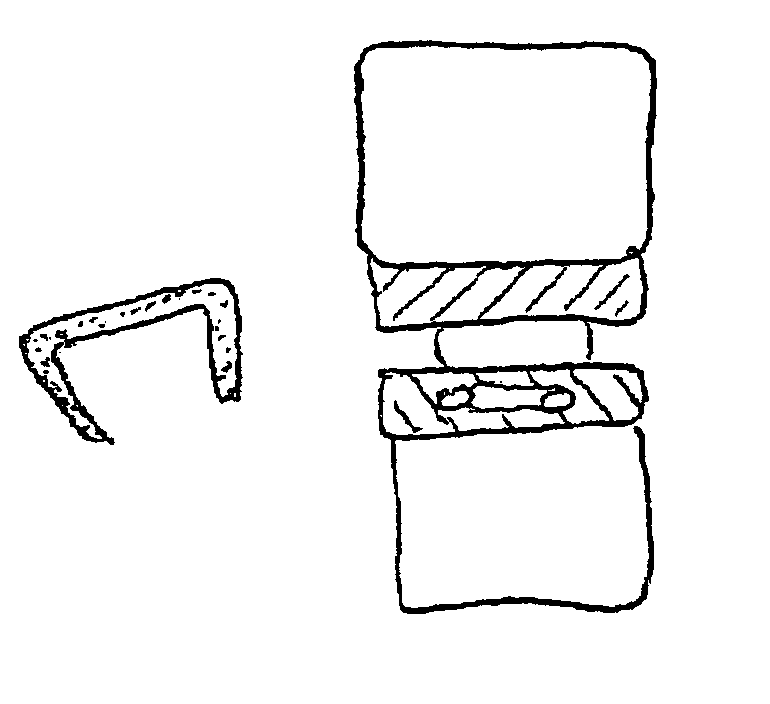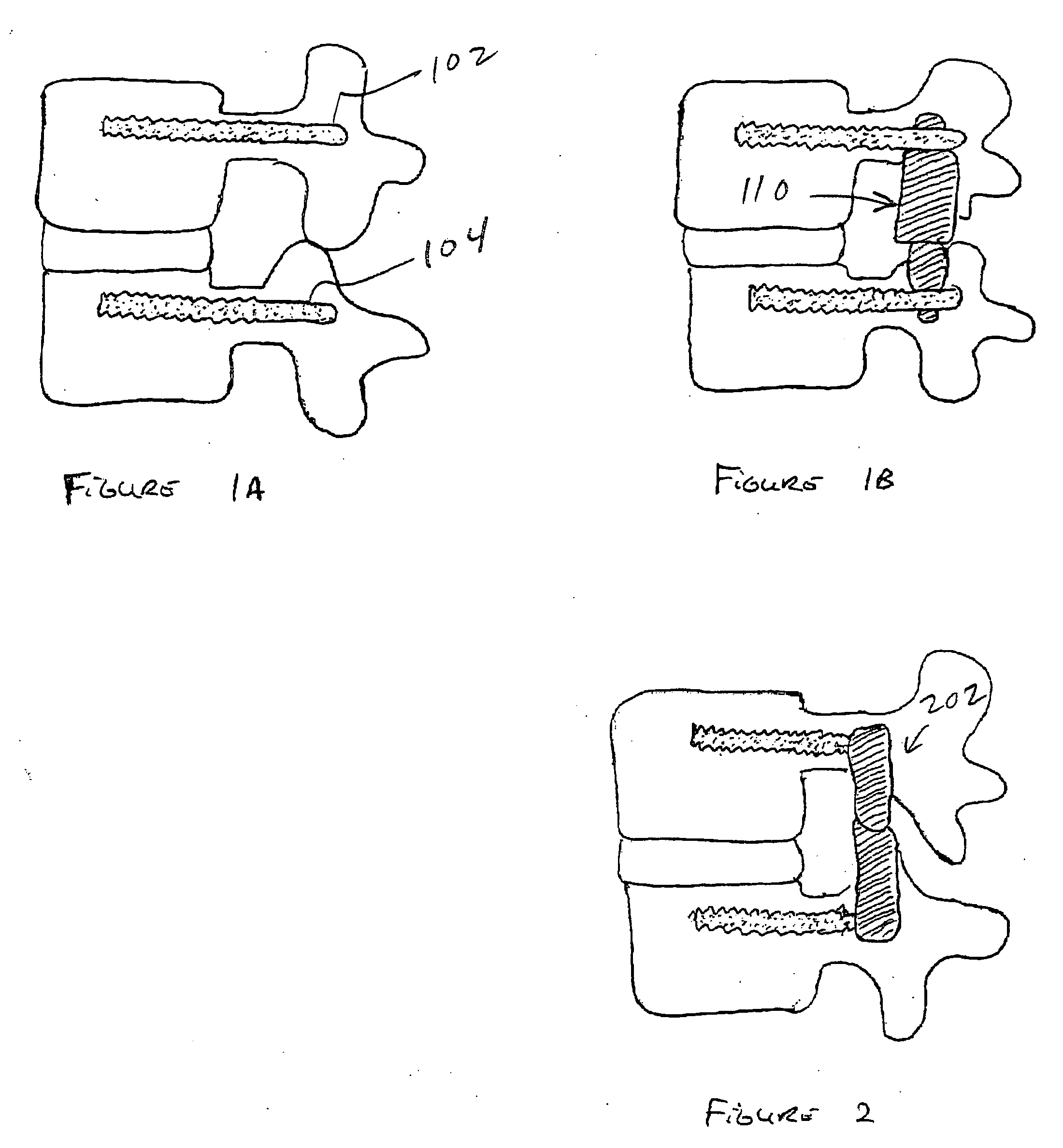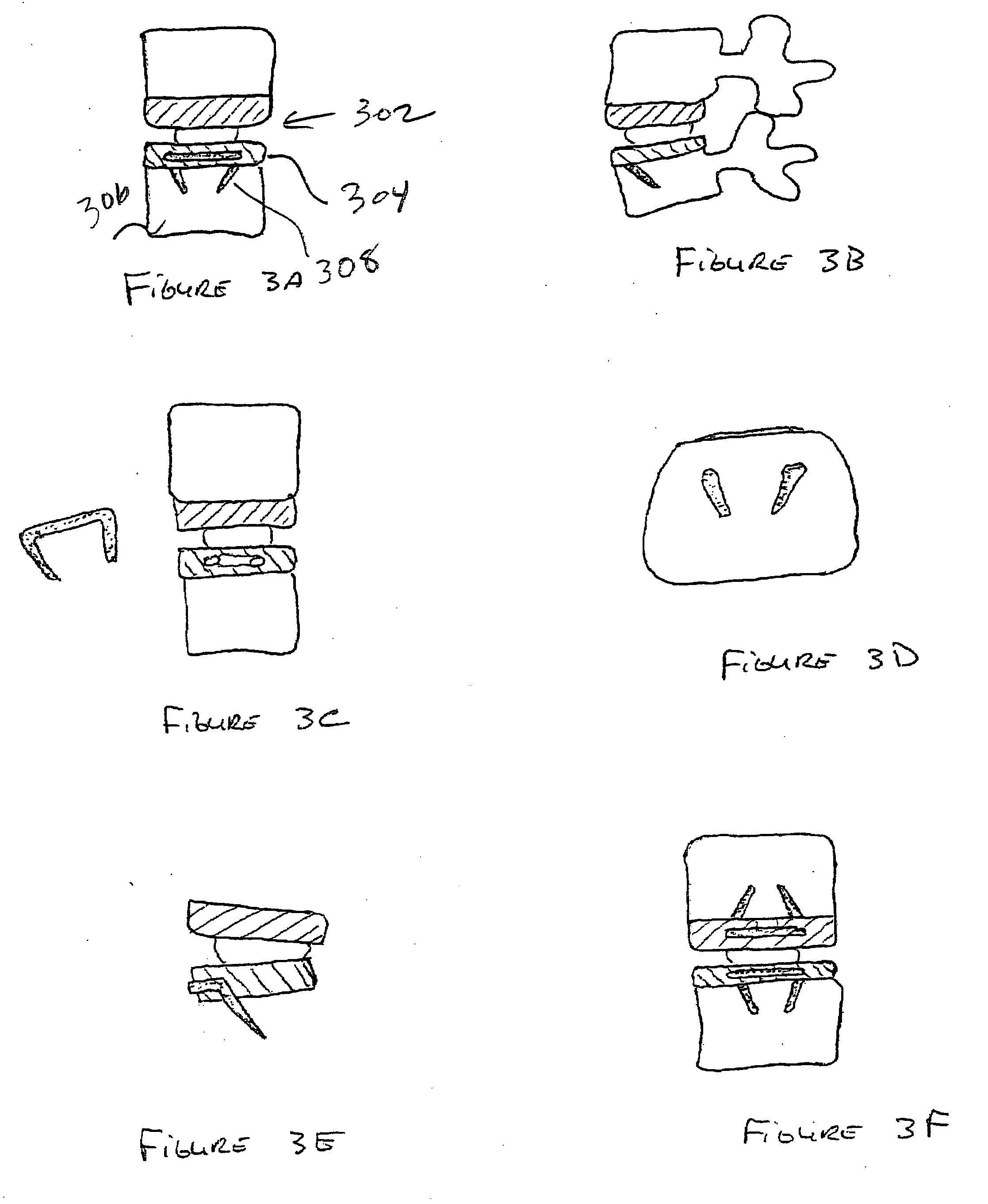Methods and apparatus to prevent movement through artificial disc replacements
a technology of artificial discs and methods, applied in the field of surgical methods and equipment, can solve the problems of preventing successful fusion, affecting the function of the disc, and insufficient anterior spinal fusion, so as to facilitate spinal fusion and improve the fit
- Summary
- Abstract
- Description
- Claims
- Application Information
AI Technical Summary
Benefits of technology
Problems solved by technology
Method used
Image
Examples
Embodiment Construction
[0133]FIG. 1A is a sagittal cross section of the spine and screws 102, 104 used to anchor a spinal arthroplasty device (not shown). The screws are partially contained in the pedicles of the vertebrae. The screws, or other anchoring devices, could be placed in other areas of the vertebrae. FIG. 1B is a sagittal cross section of the spine and a dynamic stabilization device 110. A suitable device is taught in my co-pending U.S. patent application Ser. No. 10 / 412,896, the entire content of which is incorporated herein by reference. The dynamic stabilization device may be connected to the pedicle screws during a second operation several months after inserting screws 102,104.
[0134]FIG. 2 is a sagittal cross section of the spine, anchoring components, and a facet replacement device 202 attached to the anchoring components during a second procedure after inserting the anchoring components.
[0135]FIG. 3A is a coronal cross section of the spine and an artificial disc replacement (ADR) 302. T...
PUM
 Login to View More
Login to View More Abstract
Description
Claims
Application Information
 Login to View More
Login to View More - R&D
- Intellectual Property
- Life Sciences
- Materials
- Tech Scout
- Unparalleled Data Quality
- Higher Quality Content
- 60% Fewer Hallucinations
Browse by: Latest US Patents, China's latest patents, Technical Efficacy Thesaurus, Application Domain, Technology Topic, Popular Technical Reports.
© 2025 PatSnap. All rights reserved.Legal|Privacy policy|Modern Slavery Act Transparency Statement|Sitemap|About US| Contact US: help@patsnap.com



